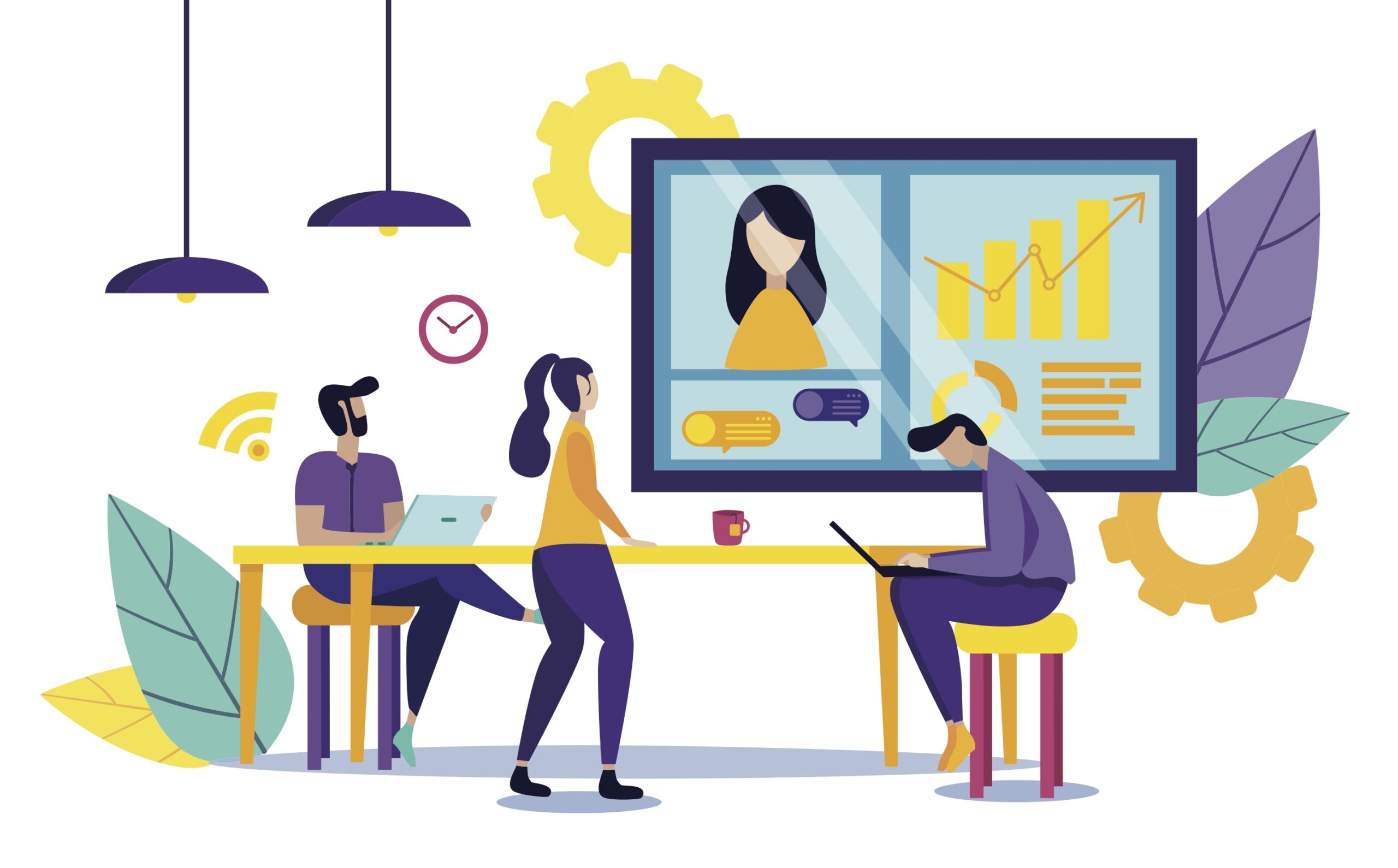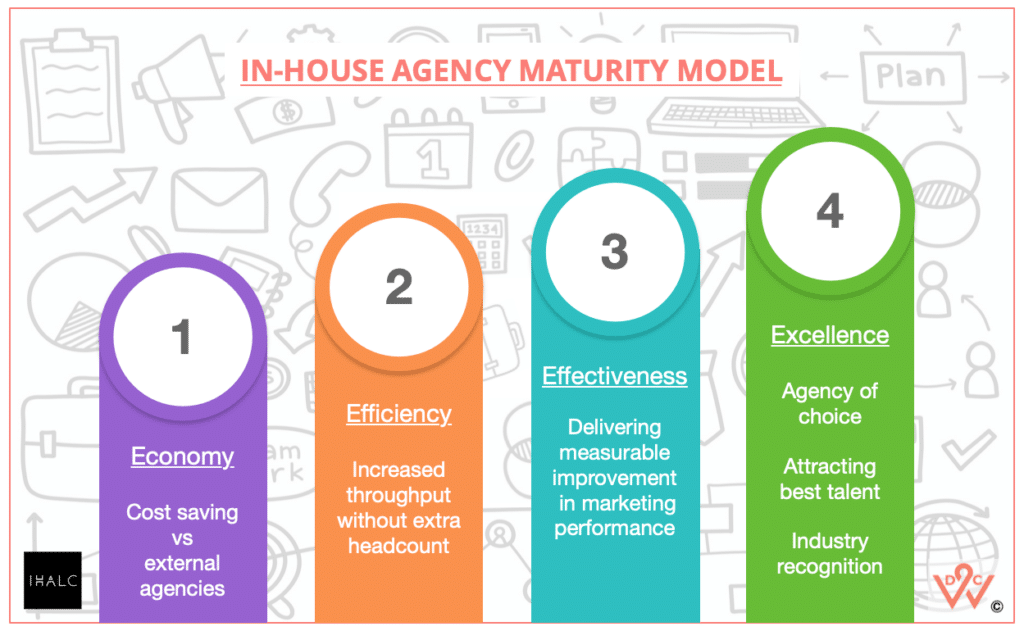How IHAs grow

Jim Hubbard sets out the path from service department to a mature In-House Agency, capable of out-performing external agencies but also of collaborating with them to create great work
What do the leading IHAs look like and how did they get there? How do you go from a service department that spends its time repurposing other people’s creative ideas or producing templated, formulaic, so-called Tier 3 work, to a strategic partner to the business, capable of outperforming external agencies and not just delivering, but originating, brilliant creative solutions to business problems?
Firstly, it’s important to note that, for some businesses, a service department may well be the correct solution to its current needs. However, as such service departments become more efficient and their value within an organisation is more widely acknowledged, opportunities open up. Building on efficiency and effectiveness, mature IHAs can arrive at a position of excellence by which they become essential contributors to the success of their business.

These are the four stages of maturity for an IHA
Stage 1, Cost saving vs external agencies
The IHA can deliver work at lower cost than external agencies, however, it is not yet competing on creativity or delivery excellence and typically would not be measuring the results of its work.
At this stage of its development, the IHA focuses on cost and convenience. The diet of work is mainly adaptation of external agency creative ideas and / or simple marketing materials that inform rather than persuade, so do not need the expertise and experience of an external agency
The internal agency is rarely a profit centre so is able to price more keenly than external agencies which have to mark up their people costs to cover overheads and profit margin targets of 15% to 20%.
Further savings are achieved through lower office costs and by having direct relationships with Marketing, reducing or eliminating the cost of an account management team. However in some cases, the cost of the IHA is treated as a business overhead, with no direct project costs charged to marketers’ budgets. This can lead to an ‘all you can eat for free’ mentality, reducing efficiency and potentially undermining morale.
But cost saving alone is is unlikely to keep marketers happy. The ability to deliver straightforward work on time is essential for even the youngest of IHAs. But marketers often flag capacity challenges and lack of skills as reasons for turning to external agencies. Ironically, the resultant fluctuation in demand for an IHA’s services can actually reduce its ability to deliver sustainable cost efficiencies, as unpredictable variation in workload often leads to under utilisation of an IHA’s resources.
Lower overheads, lower account management costs and a more predictable diet of work are common factors that enable IHAs to deliver significant cost savings to their Marketing colleagues. Furthermore, whereas external agencies target profit margins of around 15% (according to Moore Kingston Smith’s Marketing Monitor), IHAs can operate without the mark-ups needed to to achieve such financial targets. Nor are they likely to have to routinely invest in pitching, the cost of which can run to as much as £180,000 per pitch according to the Institute of Practitioners in Advertising.
To build on this foundation of cost-saving, IHAs need to deliver efficiency as they begin their journey through the maturity model.
Stage 2, Efficiency
At this stage, The IHA delivers greater efficiency than external agencies through a focus on operations.
To achieve this, the Marketing and in-house team must continually improve ways of working together, with clearly defined processes and responsibilities.
Leveraging the advantage of proximity, the IHA and Marketing team facilitate productive communication with fewer hand-overs than the levels experienced when working with external agencies. Working collaboratively, marketers and the IHA reduce the levels of unnecessary rounds of amends enabling the IHA to increase throughput and speed without increasing headcount
Resultant efficiencies liberate both marketers and IHA leaders to focus on the improvement of quality with a concomitant improvement in morale and motivation.
Stage 3, Effectiveness
Having achieved operational efficiency, and then moving up to Stage 3, the IHA is now directly competing with external agencies on cost, speed and quality. To enhance its effectiveness, the IHA now focuses on marketing performance.
There is a shared understanding between the IHA and marketers of the relationship between quality inputs and quality outputs. As a result, briefs are in writing and agreed before the IHA starts work. They are succinct, clear on desired outcomes, deliverables, and inspiring.
The IHA is ‘in the loop’ on strategic and tactical marketing objectives, fostering a commercial approach to creativity. The results of the IHA’s work are measured and the learnings close the loop on the objectives, briefs, execution, results circle.
The team is likely to be more motivated as they can understand the significance of their work.
Stage 4, Excellence
Efficient and effective, the IHA is now capable of out-performing external agencies but also of collaborating with them as an equal. Optimisation becomes the focus.
With an economic, efficient and effective model in place, delivering stronger business results, the IHA wins more projects when competing against external agencies, to the benefit of the business it supports.
The IHA recognises the value of investing in creative and effectiveness awards as a motivating factor for both marketing and IHA teams. Sector and marketing industry recognition follows. The parent business is more likely to invest in optimising the IHA.
The IHA becomes a destination employer. Quality talent is attracted and retained, further increasing the likelihood and frequency of powerful marketing communications.
There is no ‘one size fits all’ model for in-house agencies. Each business is different and will need to find its own balance between IHA and external partners in meeting its marketing needs. As an IHA matures, it is likely to want to grow its capabilities and ambitions as its host business develops its understanding of the IHA’s potential. The above sets out the four stages through which that can happen, but is up to each leadership team to agree on its own destination and how to get there.
Jim Hubbard is a partner in consultancy WDC which helps marketers and IHAs work better together. He is also a co-founder of the In-House Agency Leaders Club
